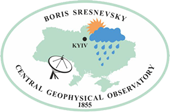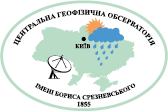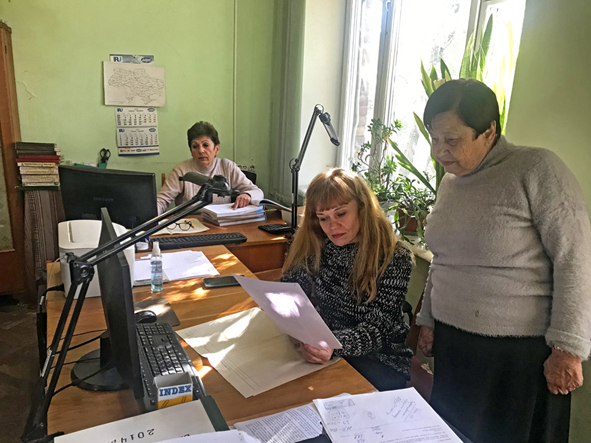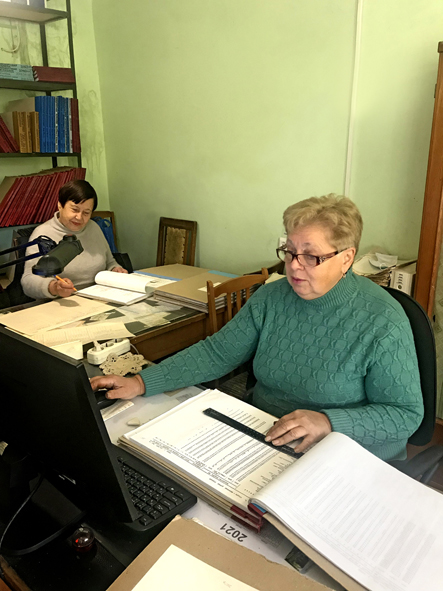About the field of climatology
|
Climatological information is needed when designing and selecting locations for industrial and civilian enterprises, to determine loads and impacts on construction objects and mechanisms, to assess working conditions in the open air; to ensure minimal pollution of the environment by emissions from designed industrial enterprises, to improve the structure of energy sources due to the wider use of solar and wind power plants, etc. |
||||
|
About the department
 According to the Regulations on the Climatology Department, its main tasks are: compilation of the Climate Cadastre of Ukraine.
According to the Regulations on the Climatology Department, its main tasks are: compilation of the Climate Cadastre of Ukraine.
Generalization and preparation for publication of meteorological and actinometric observations in the form of reference books, monographs, atlases, etc. Provision of the above publications and editions to consumers of climate information, scientists, university students, etc.
Development and introduction of new methods of climatological processing of meteorological and actinometric observations, new methods of research of the climate regime of Ukraine in accordance with the established procedure.
Organizing and conducting research work independently and together with other research institutions of the Hydrometeorological Service to better understand the regional climate and microclimate of certain regions of Ukraine, as well as to study the impact of economic activity on climate change and prepare relevant generalizations on this issue.
Studying the needs of consumers when using regime and reference information in the production activities of planning, design, and other organizations and institutions.
Participation in the development of long-term plans for the development and optimization of the meteorological and actinometric observation network.
Approval of draft annual task plans for hydrometeorological organizations on climate research.
Establishment of the National Bank of Meteorological and Climatological Data on PCs. .
Promoting knowledge about global and regional climate change through lectures and reports, radio and television appearances.
Participation in international projects and research by preparing relevant climatological information for the stations of the Ukrainian meteorological network.
In the mid-1960s, the department, together with the Odesa GMO and the ChAM GMB, prepared the "Handbook on the Climate of the USSR, Issue 10, Ukrainian SSR," which was published in 1969. The Handbook includes average long-term data for all stations of the meteorological network of Ukraine for the period from the beginning of observations at the station to 1965.
In the mid-1980s, there was a need to update the reference data, as the meteorological data series was supplemented by 20 years of observations. Under the leadership of I.I. Trusov, the Climate Department prepared a new edition - "Scientific and Applied Handbook on the Climate of the USSR. Long-term data. Issue 10. Ukrainian SSR" in two volumes. "The Handbook was published in 1990. Highly qualified climatologists with many years of experience in the department - I.I. Trusov, L.N. Sakali, O.E. Pakhaliuk, D.M. Goisa, V.V. Levchenko, T.V. Roik, T.O. Shestopal, N.I. Mailat - took part in the preparation of the Handbook.
The Handbook includes data from 49 long-range meteorological stations, generalized for the period from the beginning of observations to 1980. "The Handbook is intended to provide climatological information to consumers in various sectors of the economy, as well as for scientific research.
In the late 70s and early 80s, in connection with the intensive development of large industrial cities and changes in microclimatic and climatic conditions in these cities, their environmental conditions, it was decided to prepare a series of monographs entitled "Climate of Big Cities". In 1979-82, within the framework of this topic, the Department of Climatology, together with climatologists from the UkrNDGMI and Odesa GMI, published the following monographs: "Climate of Kyiv", "Climate of Dnipropetrovs'k", "Climate of Kharkiv", "Climate of Poltava" and "Climate of Odesa". The monographs present the results of long-term studies of the climate of these cities and the changes caused by their growth and industrial development.
The eighties and nineties of the last century were characterized by significant changes in both the global and regional climate. Under these conditions, the reference books published in the 60s and 70s no longer reflected the current state of the country's climatic conditions. Therefore, a decision was made to prepare the Handbook on Agroclimatic Resources of Ukraine. The Handbook paid special attention to the assessment of weather phenomena dangerous for agricultural production, agroclimatic conditions for growing crops, and data on the probability of the timing of certain agrometeorological phenomena. The period of generalization is from 1951 to 1985. The Handbook was prepared by the specialists of the Department under the leadership of O. Pakhalyuk together with the Department of Agrometeorology of the Ukrainian Hydrometeorological Center under the general editorship of M. Tsupenko and published in 1993.
During the liquidation of the consequences of the Chornobyl disaster, the department provided numerous certificates and answers to inquiries regarding the climatic characteristics of the territory affected by radiation.
In 1995, the Department of Climatology began work on the preparation of a fundamental work - the Climate Cadastre of Ukraine 1961-1990. The Cadastre was compiled taking into account proposals from experts in various sectors of the economy, as well as in accordance with the recommendations of the World Meteorological Organization (WMO).
The concept of the Cadastre is to prepare significant and diverse climatological information that meets the current requirements of science and practice.
The site contains information on temperature records in Kyiv based on observations by the Kyiv Meteorological Observatory, meteorological seasons (beginning, end), monthly and annual weather summaries.
Head of the Climatology Department O.A. Donich (525-69-21)








 Human production, social, and civic activities are associated with the use of natural resources, including climate resources.
Human production, social, and civic activities are associated with the use of natural resources, including climate resources.